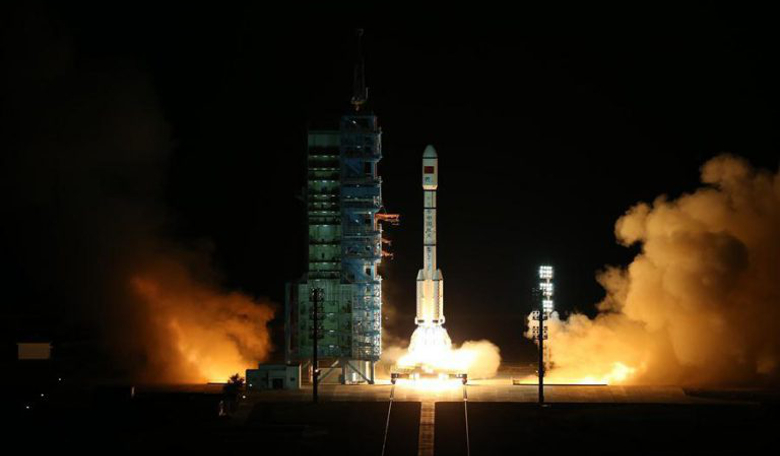China marked another pivotal moment in their quest to establish a permanent station in space by the early 2020s, by launching the Tiangong 2 space lab into Earth’s orbit yesterday.
The lab, which consists of living quarters for two astronauts, roared into the skies from the Jiuquan Satellite Launch Center in China’s northwestern Gobi Desert on the back of a Long March 7 rocket.
This new module builds on the earlier success of the first space station, Tiangong-1, and aside from being used as a home for ‘mid-term space stays’, the lab will also house experiments in medicine and various space-related technologies, one of which is called POLAR.
POLAR is a joint collaboration between Swiss, China and Polish scientists with support from the European Space Agency (ESA). Largely funded by the Swiss, this international mission is dedicated to measuring the polarity of photons from gamma ray bursts (GRBs) to try and ascertain how these bursts produce such high-energy photons in the first place.
“By itself, Tiangong 2 is not a monumental achievement, but it is an important step in a larger effort to eventually build a Chinese space station” says Brian Weeden, a space-policy expert at the Secure World Foundation in Washington DC.
Plans to construct a space station that is more economically efficient than the current International Space Station (ISS), which is set to retire in 2024, will start as early as 2017, with a core module of the space station to be launched by China around 2018 said Zhou Jianping, chief engineer of China's manned space program.
Jianping further reiterated China’s commitment to becoming a major space power, “after the building of the space station, manned space flight will become normal, which means China will send at least six astronauts in two groups to space each year.”
The station, whose name means "Heavenly Palace," is considered a stepping stone to ultimately send a mission to Mars by the end of the decade, but in the mean time the modules living quarters will be used by two astronauts heading to the lab in November for a 30-day stay – the country’s longest space mission to date.











